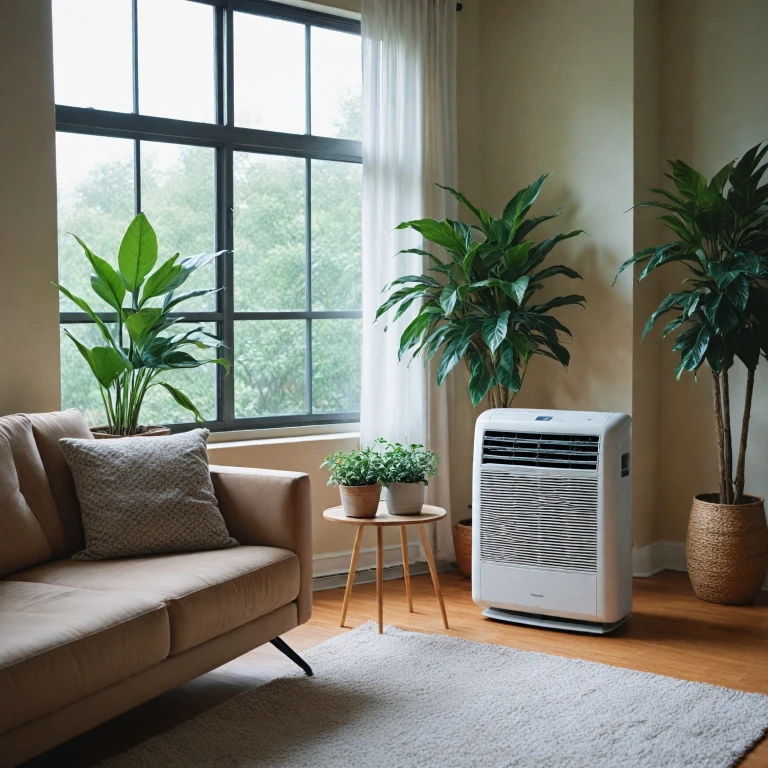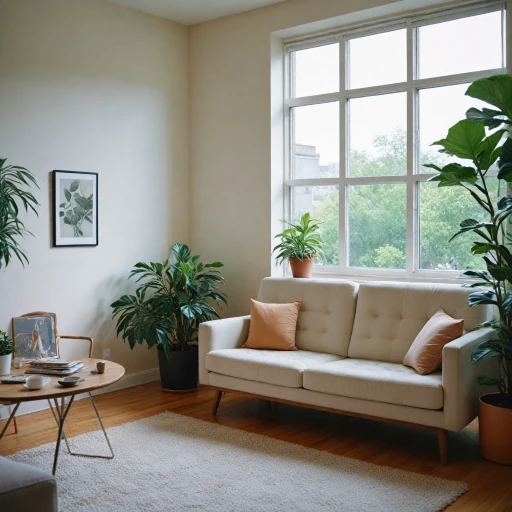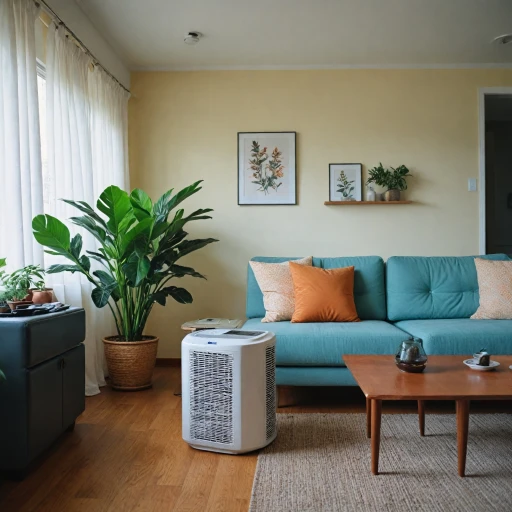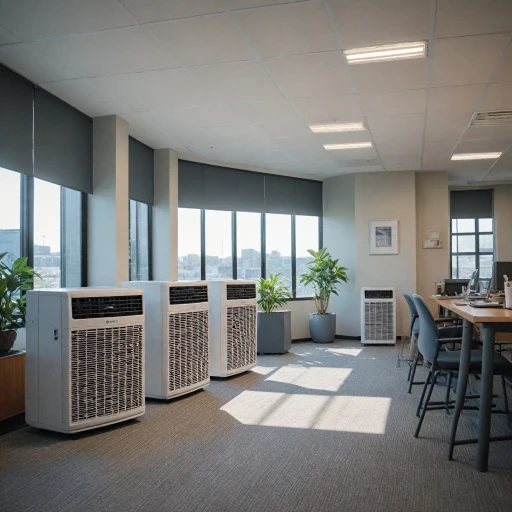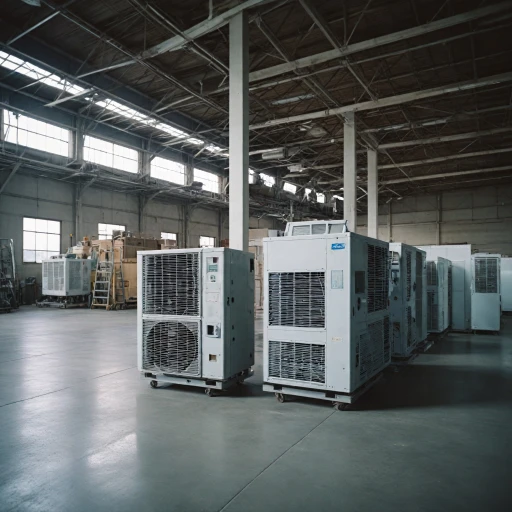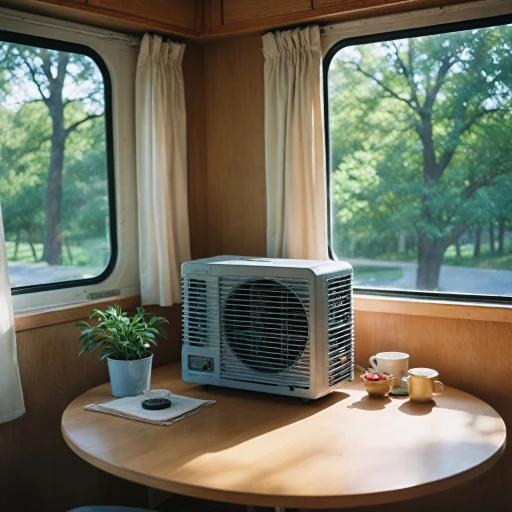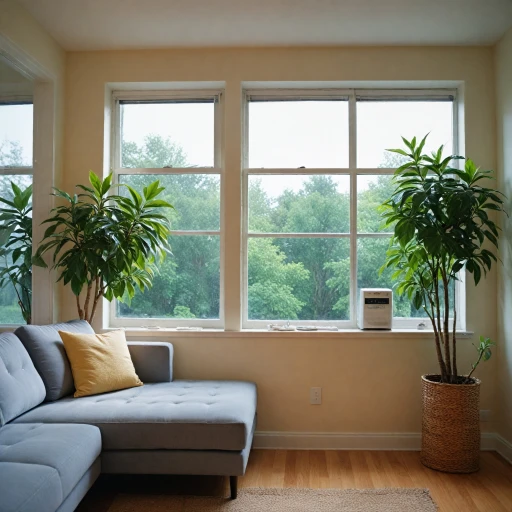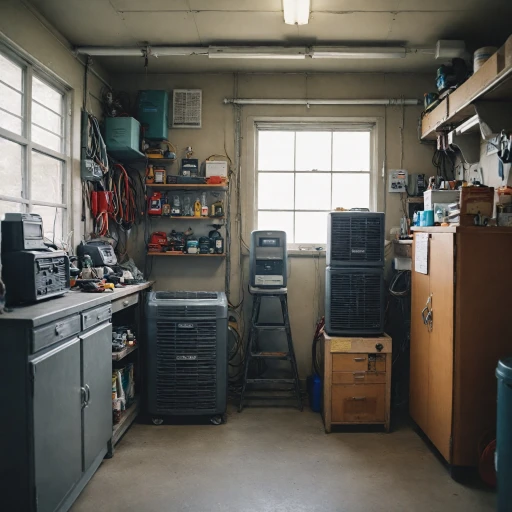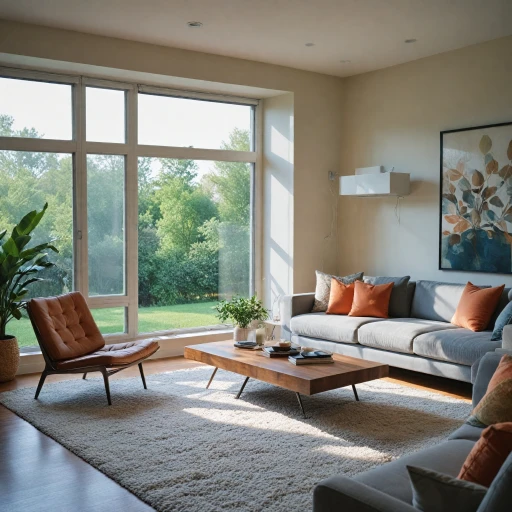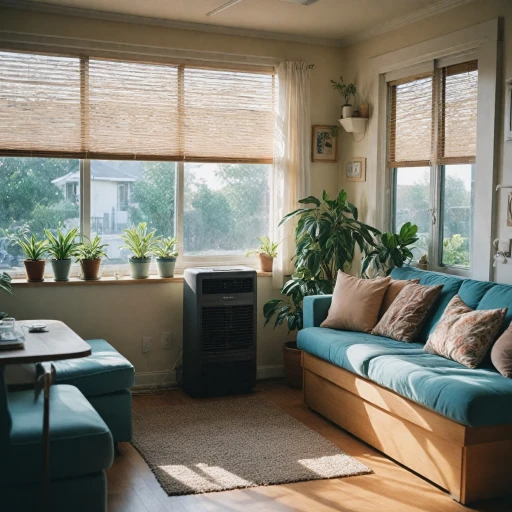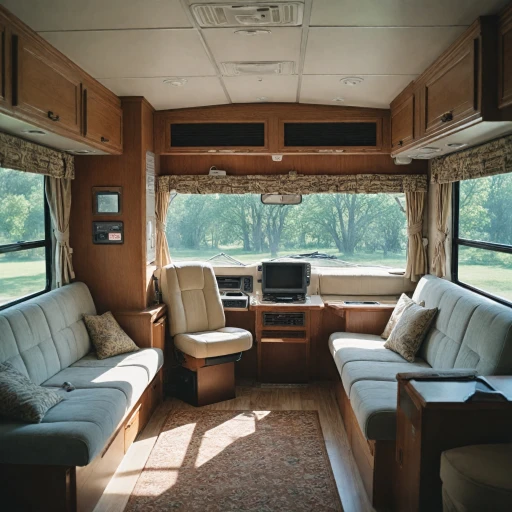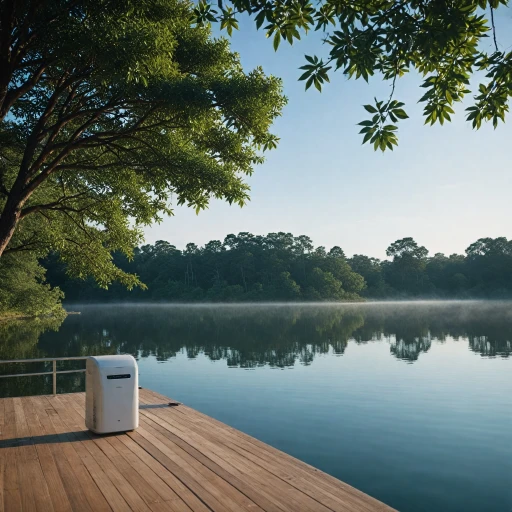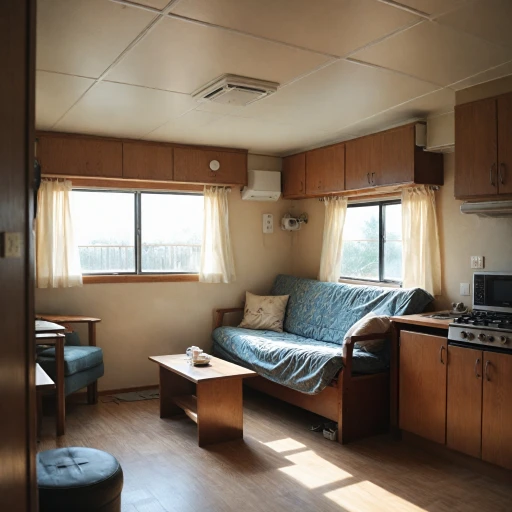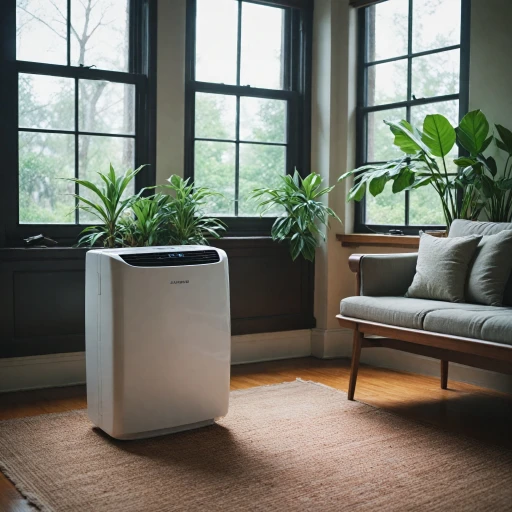
Understanding the Basics of Portable Air Conditioners
The Essentials of Portable Cooling Solutions
Portable air conditioners have become an indispensable tool for maintaining a comfortable environment in various settings. These versatile units, such as the commercial cool portable AC models, offer adaptability and ease of use compared to traditional window air conditioners.
A portable air conditioning unit is typically equipped with a fan, cooling unit, and sometimes a dehumidifier fan function, making it a comprehensive solution for indoor climate control. These systems are designed to be moved easily from room to room, providing targeted and efficient cooling where it's needed most.
When selecting a portable air conditioner, one of the primary considerations should be its BTU (British Thermal Unit) rating. This measurement plays a crucial role in determining the cooling capacity of the unit. For larger spaces, dual hose models with higher BTU ratings, like 14,000 BTU portable ACs, are often more effective, whereas smaller areas might be well-served by units with 8,000 BTU cooling power.
Most units also feature a remote control, allowing for convenient operation from a distance, and often provide various modes to choose from, such as cooling, fan, and dehumidifier, adjusting the comfort level to suit your needs.
Whether you're cooling a commercial space or a residential setting, considering these basics will guide you in finding the right portable air conditioner that works well. For more insights on selecting the best cooling option for unique environments, check out efficient cooling solutions for RVs.
Key Features to Look for in a Commercial Cool Portable AC
Identifying Essential Attributes
When selecting a commercial cool portable air conditioner, understanding the key features that distinguish superior models is essential. These attributes not only determine the cooling capacity but also impact the overall efficiency and usability of the unit. Here are important factors to consider:
- Cooling Capacity (BTU): The British Thermal Unit (BTU) rating is crucial, as it reflects the power of your portable air conditioner to efficiently cool a specified area. A higher BTU rating typically indicates a larger coverage area. Options range from 8,000 to 14,000 BTU. Check the manufacturer's recommendations regarding square feet coverage to match your room size.
- Dual Hose vs. Single Hose: A dual hose model can be more efficient for cooling larger spaces as it provides better airflow. On the other hand, single hose units are often more straightforward to install and may be sufficient for smaller areas.
- Dehumidifier Capability: Many portable air conditioners include a dehumidifier fan. This feature can be beneficial in humid environments by extracting moisture from the air, providing a more comfortable atmosphere.
- Fan Settings and Speeds: Adjustable fan settings allow you to customize the cooling experience to your preference. Variable speeds and modes can cater to different room conditions, from intense cooling to gentle airflow.
- Remote Control: The inclusion of a remote control offers convenience, enabling you to adjust the settings of the air conditioner without getting up. This can be particularly helpful in larger spaces.
- Window Kit and Installation: Evaluate if the window kit and installation process are straightforward. Efficient models provide a window installation kit that works well with various window types, ensuring effective venting.
- Energy Star Certifications: Checking for Energy Star certifications can help identify units that offer efficiency, potentially lowering energy costs over time. These models are designed to save energy without sacrificing cooling performance.
Understanding these features helps ensure you choose a model that aligns with your needs for cooling efficiency, air quality, and ease of use. For more in-depth information, you can explore resources about industrial portable air conditioners, which share insights relevant to commercial and personal applications alike.
Evaluating Your Space and Cooling Needs
Assessing Your Cooling Space and Requirements
Selecting the ideal commercial cool portable air conditioner involves understanding the environment it will serve. Take time to evaluate your space and cooling needs thoroughly. Here are some considerations that can help:- Room Size and BTU Capacity: The size of the room or area you intend to cool plays a crucial role in determining the right BTU (British Thermal Units) required. Larger spaces require higher BTU capacities for effective cooling. A well-matched unit ensures comfort and efficiency. Calculating the square feet of the space and matching it with a suitable BTU rating, such as 14,000 BTU, can significantly improve cooling performance.
- Heat Sources: Consider any additional heat sources present in the room, like appliances, direct sunlight, or a poor window design. These can affect the cooling efficiency of your unit.
- Ventilation Needs: Portable air conditioners typically vent hot air out of a window. Determine whether a single or dual hose system suits your space better. Dual hose models, for example, tend to be more efficient in cooling larger areas as they draw in air exclusively for cooling and expel warm air, creating a balanced airflow.
- Room Configuration: Factors such as ceiling height, room layout, and insulation can impact the performance of portable air conditioners. High ceilings or open plan spaces may require units with greater cooling capacity to work effectively.
Installation and Maintenance Tips
Setting Up for Success
When considering the installation of your commercial cool portable air conditioner, understanding the setup process is crucial for ensuring optimal performance. Unlike permanent units, these conditioners offer flexibility but require thoughtful placement and dedicated attention to detail. A few tips can help you maximize performance and minimize inconvenience.
Choosing the Right Location
Finding an appropriate spot in your room is the first step. Make sure the air conditioner unit is positioned near a window for effective exhaust and ventilation. This helps the hose to efficiently expel warm air, supporting the cooling process. A location with easy access to an electrical outlet and enough space to accommodate the unit’s dimensions is ideal. Ensure there are no obstructions, so the air flows freely and the cooling fan operates efficiently.
Installation Made Easy
The process of setting up a portable air conditioner might seem daunting, but with the right guidance, it can be straightforward. Each model typically comes with a manual that provides step-by-step instructions specific to that unit. Generally, the units come equipped with a window kit to facilitate hose setup, so following the manual is essential for a successful installation. Make sure the window panels are sealed well to prevent hot air leaks, which could reduce the cooling capacity.
Easy Maintenance Practices
Once installed, keeping the air conditioner in good condition requires regular maintenance. First, monitor the air filters and clean them periodically; clean filters ensure the unit operates efficiently and prolong its lifespan. Also, check the water collection tray in models featuring dehumidifier capabilities. Draining the tray regularly prevents overflow and maintains the unit’s cooling performance.
If your portable air conditioner includes a remote control, confirm that it functions properly to facilitate convenient adjustments.
Common Troubleshooting Tips
Sometimes, issues may arise during installation that are easily resolved. For instance, if the unit isn't cooling effectively, double-check that the hose is connected securely with no kinks. Also, ensure the room is adequately insulated to prevent cool air from escaping.
Energy Efficiency and Cost Considerations
Balancing Efficiency and Economy in Portable Air Conditioners
When considering a portable air conditioner, energy efficiency and cost are pivotal factors that can significantly affect your decision-making process. An efficient model not only cools your space effectively but also minimizes energy consumption, thereby reducing utility bills.
Look for units that have high energy efficiency ratios (EER) or seasonal energy efficiency ratios (SEER). These ratings provide useful insights into the operational efficiency of the air conditioner. Models featuring Energy Star certifications can also indicate efficiency, helping you save on energy costs while delivering a comfortable cooling experience.
The cooling capacity of the unit, measured in BTUs, plays a crucial role in its energy consumption. A unit with a higher BTU rating generally consumes more energy but also covers more square feet. Choosing the right BTU level based on your room size ensures optimal performance without unnecessary energy uses. For instance, a black decker model with a 14,000 BTU rating could cover a spacious area, yet might be overkill for smaller rooms, impacting energy use negatively.
Additionally, consider models with user-friendly features such as remote control operability and programmable timers, which contribute to the unit's overall efficiency by allowing precise control over cooling schedules. Some conditioners come equipped with dual hose systems, enabling faster cooling and improved efficiency, doubling as a dehumidifier fan that maintains comfort without excessive energy draw.
Regular maintenance also plays a role in maximizing energy efficiency. Cleaning filters, checking hoses for blockages, and ensuring the window seals are intact all enhance a unit's performance, maintaining efficiency levels and prolonging the lifespan of the conditioner portable.
Lastly, it's essential to evaluate the initial cost against long-term savings. While a unit with excellent features like rapid cool options or a versatile cooling fan might have a higher upfront cost, the energy savings accrued over time make it a worthwhile investment for both commercial and residential settings.
Comparing Popular Models and Brands
Comparing Models and Brands: Finding the Right Fit
When diving into the world of portable air conditioners, especially if you're considering a commercial cool model, it becomes essential to evaluate the available options and brands to make a well-informed choice. The right model for you will depend on various factors such as cooling needs, space, and key features that align with your requirements. Here, we compare some popular models within the portable air conditioner market and highlight what sets them apart.- Cooling Capacity and BTU Rating: Different models offer varied BTU ratings, which is a crucial factor in determining the cooling capacity of a unit. For instance, if your space demands substantial cooling, opting for a model with a higher BTU rating is advisable. Some reliable brands provide models with up to 14,000 BTU, providing efficient cooling for larger spaces.
- Dual Hose vs. Single Hose: Dual hose models, such as those offered by Black Decker, typically deliver better cooling efficiency compared to their single hose counterparts. This is because they separate the intake and exhaust processes, reducing negative pressure and allowing for more effective cooling.
- Key Features: Look for models that offer features that suit your needs, like a remote control for easy management, built-in dehumidifier fan, or multiple cooling modes. Units that also function as a dehumidifier fan help maintain optimal humidity levels and enhance air quality.
- Room Size and Layout: Depending on whether your focus is on cooling a single room or a larger area, the unit’s BTU and cooling capacity must align with the total square feet of the space. Verified purchase reviews can provide insights into how well a unit performs in various room sizes.
- Brand Reputation and Reliability: Opting for models from well-known brands usually ensures durability and enhanced performance. Checking customer feedback and ratings, often detailed in verified purchase reviews, can offer valuable insights into the reliability and performance of a specific model.
- Aesthetic and Portability: The design and look, such as a sleek black finish, along with the ease of moving the cooler from one room to another, contribute to user convenience. Ensure the model fits well with your room decor and is easy to maneuver when needed.
- Environmental and Financial Considerations: Energy-efficient models, often indicated by high star ratings, not only reduce operational costs but also lessen environmental impact. Consider models that prioritize energy conservation while delivering effective cooling.
